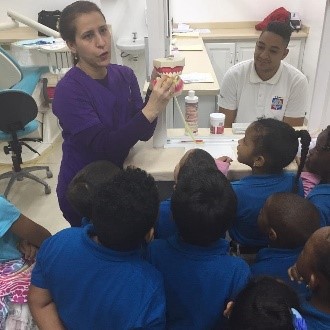Partnering with Others
Cooperative learning is widely recognised as valuable for students, but cooperative teaching isn’t so widely valued. It seems to be easier to visualise how working with others and sharing gifts and resources can benefit other people, but sometimes our personal habits of autonomy and independence can keep us, as teachers, from seeing the value of partnerships.
 Educational partnerships are an excellent way to model a humble spirit that acknowledges that God has designed people to work in dependence on Him and in cooperation with others. The New Testament uses the metaphor of a body to describe our relationship to Christ and everyone who is a child of God. Everyone is needed, although different parts of the body have different roles. Partnerships are concrete expressions of this kind of inter-relationship.
Educational partnerships are an excellent way to model a humble spirit that acknowledges that God has designed people to work in dependence on Him and in cooperation with others. The New Testament uses the metaphor of a body to describe our relationship to Christ and everyone who is a child of God. Everyone is needed, although different parts of the body have different roles. Partnerships are concrete expressions of this kind of inter-relationship.
There is a temptation to function as if we didn’t need the gifts of others, but the Bible is clear that the Holy Spirit doesn’t give all His gifts to any one person. No one can contribute more than a fraction of what is needed in any situation and there is always a temptation to think too highly of ourselves. The more an individual has, the harder it is to recognise that without Christ—and the rest of His Body—we can do nothing. Partnerships recognise our dependence in specific situations, demonstrating to a watching world that our interdependence is more than a theoretic construct.
Educational partnerships can take many different forms including small group accountability, classroom observation, team teaching, multi-class assignments or projects, professional development workshops, and many more. Each form has different levels of risk and different kinds of relationship, but all require an individual to work with others to be successful. Some partnerships will be easier than others, but it is likely that all will require committed effort to move beyond an initial period of discomfort or awkwardness. Partnerships are great ideas, but they are no magic solution to minimise the amount of work that is necessary. Working with others requires us to learn about them—and ourselves—as we navigate a project together. As anyone who has run a three-legged race can tell you, working in sync with others doesn’t come automatically. And when we add crossing cultures to the mix, the learning curve steepens.
The key to success is recognising the benefits of partnership and then committing to the process through all its stages from the “honeymoon” through difficulties to maturity and fruitfulness. But for any sort of a partnership to occur, we have to risk taking that first step. Here are some ideas to get started:
- Develop a small group of colleagues and/or friends with whom you share struggles and successes.
 You can get used to talking about what happens in your classroom and will likely gain important insights as you verbalise your experiences and hear the experiences and insights of others in the group.
You can get used to talking about what happens in your classroom and will likely gain important insights as you verbalise your experiences and hear the experiences and insights of others in the group. - Have someone observe your teaching. This requires more vulnerability, but there is also more objectivity since you aren’t filtering the reports and the observer can see in your blind spots.
- Team teaching can bring the strengths of multiple teachers together, but it is easier to do this for short, focused units rather than planning to use this for a whole year.
- Collaborate on a topic or even a specific assignment like a history of science essay that involves history, language arts, and science teachers in the evaluation. This can help students gain a more integrated picture of what they are learning without changing a lot of instructional strategies, so it might be considered a good “starter” partnership.
- Share your experience and insights with others in a workshop. You’ll learn in the preparation and interaction and they will benefit from the journey God has taken you on.
Every gift given by the Holy Spirit is not for our personal well-being, but for the service of others. This is as true of our teaching as every other area of our lives. It is a lot harder to draw attention to God’s goodness and greatness when we are working successfully “on our own.” Even if we aren’t consciously drawing attention to our personal goodness and greatness, it is harder for others to see our dependence if we’re working without visible support. Taking the time to consciously develop collaborative partnerships is a concrete way we can demonstrate this dependence for a watching world. And as we know, our students are always watching.
Harold Klassen
Teacher Education Services
TeachBeyond
Photo Credits: Holding Hands. Pexels. Pixaby. cc. Teacher Collaboration.Sullivan, Laurie.10 Dec. 2014. Flicker. cc.
 Harold and his wife, Betty, have served with TeachBeyond since 1977. From 1998 to the present Harold has been an educational consultant working with teachers worldwide. He has written a book, The Visual Valet: Personal Assistant for Christian Thinkers and Teachers, and his website, www.transformingteachers.org, has resources to help equip teachers for Christ-centered, transformational education.
Harold and his wife, Betty, have served with TeachBeyond since 1977. From 1998 to the present Harold has been an educational consultant working with teachers worldwide. He has written a book, The Visual Valet: Personal Assistant for Christian Thinkers and Teachers, and his website, www.transformingteachers.org, has resources to help equip teachers for Christ-centered, transformational education.





